|
An End To Terrorism
HROUGHOUT
history terrorism always ends, but how? Today it flourishes as never
before because a new global environment offers our enemies
opportunities they never had. Audrey Kurth Cronin in
How Terrorism Ends
argues that democratized communications (read, Twitter), an increase
in public access (Web sites), a sharp reduction in cost (use your
target’s own weapons, such as their airplanes to destroy their
buildings), a growth in frequency of messages (cellphones), and an
exploitation of images (videos) "presents groups like al-Qaeda an
enhanced opportunity to leverage the effects of terrorist attacks in
a way that is unprecedented."
The danger to the U.S. is that this terrorist group,
using all modern means of communication, can extend is influence
worldwide and mobilize disparate groups to extend its terrorist
agenda indefinitely, ultimately leading to broader conflict and war,
thus destabilizing the entire international system.
This may happen if we respond in a foolish way.
Cronin writes, "The crucial mistake after 9/11, as after countless
other terror attacks throughout history, was in overreacting and
treating a terrorist campaign as though it were part of a
traditional military campaign in which the application of brute
force would compel the enemy into submission."
We’ve mobilized our military forces to pound him the
enemy into the earth, and has that worked? Indeed, "that pounding
may be just what a terrorist campaign needs to regain then
initiative with its constituents," Cronin affirms.
Don’t go out with the intention of killing the
ringleader. It is more effective to capture and arrest him, as the
"jailing of a leader demystifies him and demonstrates the power of
the legal edifice of the state."
With Cronin’s creds, it’s worth
studying her analysis. She is professor of strategy at the U.S.
National War College in Washington, DC, and senior associate in the
Changing Character of War program at Oxford. Princeton University
Press, 330 pages,
$29.95
Amazon.com Price:
$21.56)
|
|
Page
Turners
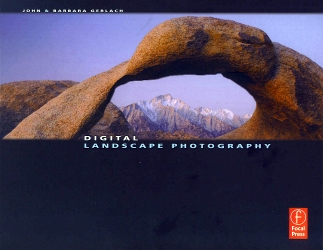 }Digital Landscape
Photography }Digital Landscape
Photography
is a wonderful book to keep and enjoy. Even
after having mastered the tips and lessons of shooting nature,
you’ll want to have this book permanently on your bookshelf to study
the awe-inspiring pictures by the authors. The professional
photography team of John and Barbara Gerlach live in the picturesque
mountains of Idaho near Yellowstone National Park. John swears by
Canon, while Barbara is loyal to Nikon, the two systems they tout as
superb, although they encourage you to use whatever DSLR
professional-level equipment you already own. You will learn many
fascinating things about creating eye pleasing pictures of quality.
A quality landscape image, they write, "must be well exposed so that
color, detail, and contrast make the image appealing…illuminated by
an attractive and complimentary light." And they must be sharp. Take
it from the Gerlachs. They know how to help you. With three decades
of photographing landscapes, they’ve been teaching students with
field trips, seminars and photo tours. Focal Press/Elsevier, soft
cover, 199 pages,
$24.95
Amazon.com Price:
$16.47)
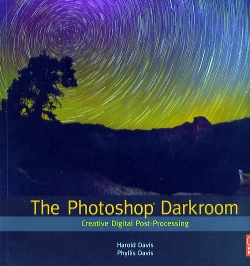 }The Photoshop
Darkroom is a super friendly instructional manual for
creative digital post-processing. Harold and Phyllis Davis’ book is
loaded with countless illustrations giving step by step directions
on how to work in RAW, make sense of histograms (I’m still
struggling with that), creating stunning black and white images,
mastering layers, combining photos, and everything else you want to
do with Photoshop darkroom workflow. The fundamental techniques the
authors impart are applicable to almost every version of Photoshop.
Focal Press/Elsevier, soft cover, 208 pages,
$39.95
Amazon.com Price:
$26.37) }The Photoshop
Darkroom is a super friendly instructional manual for
creative digital post-processing. Harold and Phyllis Davis’ book is
loaded with countless illustrations giving step by step directions
on how to work in RAW, make sense of histograms (I’m still
struggling with that), creating stunning black and white images,
mastering layers, combining photos, and everything else you want to
do with Photoshop darkroom workflow. The fundamental techniques the
authors impart are applicable to almost every version of Photoshop.
Focal Press/Elsevier, soft cover, 208 pages,
$39.95
Amazon.com Price:
$26.37)
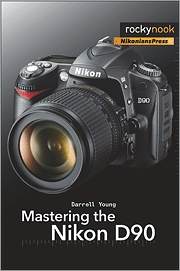 }Mastering the
Nikon D90
is an excellent release, the fourth in a series of camera books from
the Nikonians Press, a worldwide organization that caters to Nikon
community of digital photographers. The D-90, an upgrade to the D80,
is the first DSLR to record high-definition videos at 24fps with
mono sound. Information technology engineer Darrell Young dedicates
an entire chapter to the possibilities. This is the book you need to
get if you want information in a friendlier manner than the Nikon
user’s manual presents, which I find sometimes a bit academic. Rocky
Nook, 352 pages, $34.95
Amazon.com Price: $23.07)
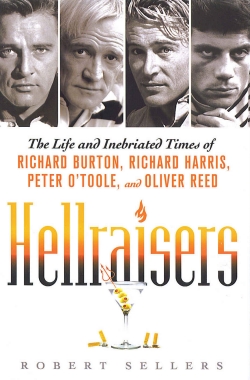 }Hellraisers
describes four inebriated British film stars whom Robert Sellers, a
former standup comedian, profiles in this eye-opener of a book. All
four—Richard Burton, Richard Harris, Peter O’Toole, Oliver
Reed—distinguished themselves on screen and the barroom floor. They
delighted in raising hell with their constant bouts with the bottle.
Harris loved the excitement of his drinking days. "Life is made from
memories, which is a pity as I don’t remember much," Harris said.
St., Martin’s Press, 286 pages, $25.99
Amazon.com Price: $17.15) }Hellraisers
describes four inebriated British film stars whom Robert Sellers, a
former standup comedian, profiles in this eye-opener of a book. All
four—Richard Burton, Richard Harris, Peter O’Toole, Oliver
Reed—distinguished themselves on screen and the barroom floor. They
delighted in raising hell with their constant bouts with the bottle.
Harris loved the excitement of his drinking days. "Life is made from
memories, which is a pity as I don’t remember much," Harris said.
St., Martin’s Press, 286 pages, $25.99
Amazon.com Price: $17.15)
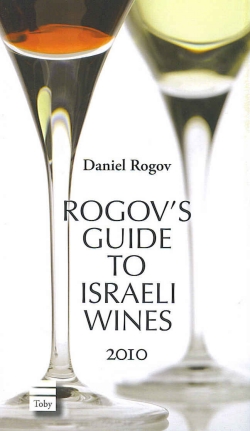 }Rogov’s Guide to
Israeli Wines 2010
describes, sorts and ranks about 2,000 wines from 140 vineries. Who
knew Israel has become one of the fastest growing wine regions in
the world? Wine/restaurant critic Daniel Rogov of Ha’aretz starts
out with a history of wine in ancient and modern history. He
explains what makes an Israeli wine kosher and points out that not
all Israeli wines are kosher. Okay, let’s get to the Ten Best list.
No. One on the Ten Best Wine Producers is Golan Heights Winery (Katzrin,
Yarden, Gamla). Topping the Ten Up-and-Coming Producers we find
Binyamina. Galil Mountain reigns as best of the Ten Best Value
Producers. Toby Press, 485 pages, $19.95
Amazon.com Price: $14.36). Rogov’s Guide to
Kosher Wines 2020 goes beyond Israel. It’s a comprehensive
examination of kosher wines from around the world. Particularly
useful are the chapters on what makes a wine kosher, hosting a
tasting party and how to open a bottle of sparkling wine. Toby
Press, 145 pages, $19.95. }Rogov’s Guide to
Israeli Wines 2010
describes, sorts and ranks about 2,000 wines from 140 vineries. Who
knew Israel has become one of the fastest growing wine regions in
the world? Wine/restaurant critic Daniel Rogov of Ha’aretz starts
out with a history of wine in ancient and modern history. He
explains what makes an Israeli wine kosher and points out that not
all Israeli wines are kosher. Okay, let’s get to the Ten Best list.
No. One on the Ten Best Wine Producers is Golan Heights Winery (Katzrin,
Yarden, Gamla). Topping the Ten Up-and-Coming Producers we find
Binyamina. Galil Mountain reigns as best of the Ten Best Value
Producers. Toby Press, 485 pages, $19.95
Amazon.com Price: $14.36). Rogov’s Guide to
Kosher Wines 2020 goes beyond Israel. It’s a comprehensive
examination of kosher wines from around the world. Particularly
useful are the chapters on what makes a wine kosher, hosting a
tasting party and how to open a bottle of sparkling wine. Toby
Press, 145 pages, $19.95.
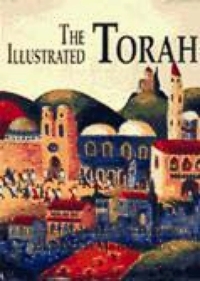 }The Illustrated
Torah
is an abridged Hebrew Bible that will appeal to non-Jews and
available at select Cosco stores in New Jersey, Virginia, Florida
and California. The volume consists of excerpts from the 52 weekly
Torah portions (sidrot) and the prophetic readings (haftarot),
enehanced with a brief summary by Dr. Ellen Frankel, editor in chief
of the Jewish Publication Society. Israeli artist Michal Meron
illustrates every page in the naïve style, similar to traditional
American folk art. Gefen, 248 pages,
Amazon.com Price:
$60.00) }The Illustrated
Torah
is an abridged Hebrew Bible that will appeal to non-Jews and
available at select Cosco stores in New Jersey, Virginia, Florida
and California. The volume consists of excerpts from the 52 weekly
Torah portions (sidrot) and the prophetic readings (haftarot),
enehanced with a brief summary by Dr. Ellen Frankel, editor in chief
of the Jewish Publication Society. Israeli artist Michal Meron
illustrates every page in the naïve style, similar to traditional
American folk art. Gefen, 248 pages,
Amazon.com Price:
$60.00)
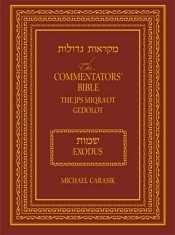 }The Commentators’
Bible: The JPS Miqra’ot Gedolot is the English version of a centuries-old volume of rabbinical
commentaries and explanations of the Torah. The collection includes
translations of such rabbinical masters as Rashi, Rashbam, Ibn Ezra
and Nahmanides. Included also are selections from Bekhor Shor, Kimhi,
Gresonides, Abarbanel and Sforno. A truly awesome text of Torah
study. So far two volumes have been published: Exodus in 2005, and
Leviticus in 2009. Jewish Publication Society, $75 per volume.,
$29.95
Amazon.com Price: $47.25) }The Commentators’
Bible: The JPS Miqra’ot Gedolot is the English version of a centuries-old volume of rabbinical
commentaries and explanations of the Torah. The collection includes
translations of such rabbinical masters as Rashi, Rashbam, Ibn Ezra
and Nahmanides. Included also are selections from Bekhor Shor, Kimhi,
Gresonides, Abarbanel and Sforno. A truly awesome text of Torah
study. So far two volumes have been published: Exodus in 2005, and
Leviticus in 2009. Jewish Publication Society, $75 per volume.,
$29.95
Amazon.com Price: $47.25)
|